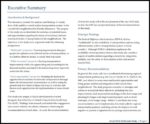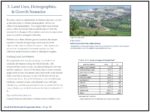We are interested to know your thoughts about the changes we are proposing to our Public Involvement Plan.
The MIC’s Public Involvement Plan (PIP) spells out our process for obtaining public input as an integral part of the transportation planning process. 
Recently we put these procedures to the test, during the development of our Long Range Transportation Plan (LRTP). We noted several edits, deletions and additions to be incorporated into the 2013 PIP document as approved revisions. The proposed revisions are:
1. Delete all references to air quality consultations
Why is this being proposed?
As of late 2014, Duluth has received an ‘Attainment’ area for air quality; therefore federal ‘conformity consultation’ requirements no longer apply. (pages 7, 29, 33, 50)
2. Discontinue the step of placing hard copies of the Draft and Final TIPs and LRTPs at area libraries for review.
Why is this being proposed?
Placing hard copies at the libraries was a method of distribution that predated the 2005 SAFETEA-LU mandate to utilize electronic and online channels (e.g., CDs, websites and email) to deliver plans and planning process information. At that time the MIC switched from producing printed versions to formatting our plans as PDFs designed to be viewed online, as well as developing online-only visualization features such as interactive mapping. (pages 29, 30, 33, 40, 41)
3. Add the following language for members of the public who wish to give comments at regularly scheduled meetings of the Policy Board, TAC, HTAC and BPAC:
Speaker Rules – for Commenting at MIC Policy Board, TAC, HTAC and BPAC meetings (page 11)
- Give your name and affiliation (if any)
- Comment Time Limit: 3 minutes*
- Limit your remarks to the specific plan, study or document under consideration by the Board
- Be respectful in dialogue
* The Chair, with committee approval, has the option of extending or closing the public comment period, depending on the number of people who wish to speak and the length of the meeting agenda
Why is this being proposed?
The point of the speaker rules is to ensure that all people who show have the opportunity to have their say. The 3-minute time limit is consistent with Duluth City Council and St. Louis County Commission rules. Some flexibility in the amount of time for each speaker is allowed.
Let us know what you think
Public comments about the proposed changes may be made from December 14, 2014 through January 30, 2015, by commenting below, or contact Rondi Watson at (218) 529-7511 or by email .
Comments are also welcomed in person at the MIC Policy Board meeting on Wed, February 18, 2015, at 7pm at the Hermantown Dept. of Public Safety Training Center, 5111 Maple Grove Road, Hermantown, MN. The proposed revisions will be presented for a vote at this time, along with a summary of all comments received during the public comment period.
To view a copy of the 2013 Plan and the proposed changes, please visit www.dsmic.org/pip.













